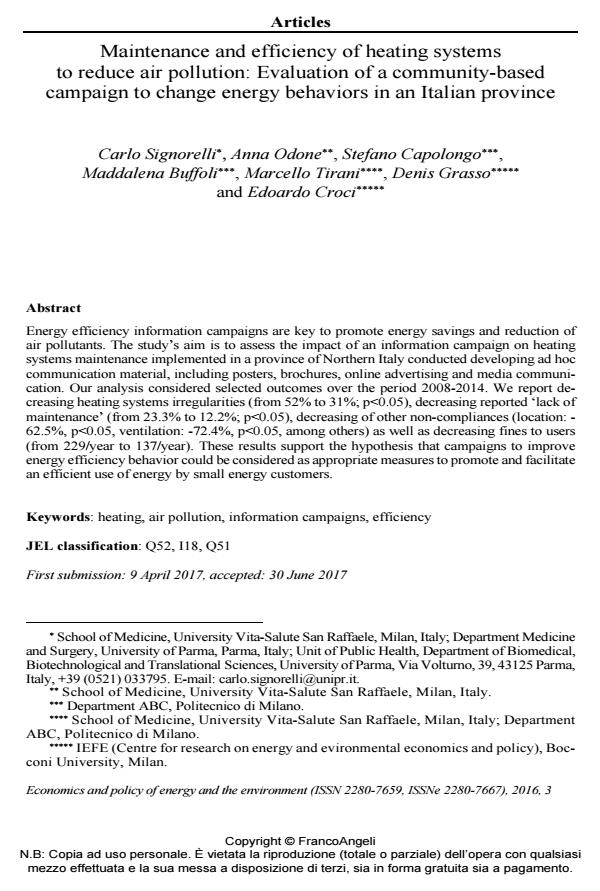Maintenance and efficiency of heating systems to reduce air pollution: Evaluation of a community-based campaign to change energy behaviors in an Italian province
Titolo Rivista ECONOMICS AND POLICY OF ENERGY AND THE ENVIRONMENT
Autori/Curatori Carlo Signorelli, Anna Odone, Stefano Capolongo, Maddalena Buffoli, Marcello Tirani, Denis Grasso, Edoardo Croci
Anno di pubblicazione 2017 Fascicolo 2016/3
Lingua Inglese Numero pagine 10 P. 89-98 Dimensione file 161 KB
DOI 10.3280/EFE2016-003008
Il DOI è il codice a barre della proprietà intellettuale: per saperne di più
clicca qui
Qui sotto puoi vedere in anteprima la prima pagina di questo articolo.
Se questo articolo ti interessa, lo puoi acquistare (e scaricare in formato pdf) seguendo le facili indicazioni per acquistare il download credit. Acquista Download Credits per scaricare questo Articolo in formato PDF

FrancoAngeli è membro della Publishers International Linking Association, Inc (PILA)associazione indipendente e non profit per facilitare (attraverso i servizi tecnologici implementati da CrossRef.org) l’accesso degli studiosi ai contenuti digitali nelle pubblicazioni professionali e scientifiche
Energy efficiency information campaigns are key to promote energy savings and reduction of air pollutants. The study’s aim is to assess the impact of an information campaign on heating systems maintenance implemented in a province of Northern Italy conducted developing ad hoc communication material, including posters, brochures, online advertising and media com-munication. Our analysis considered selected outcomes over the period 2008-2014. We report decreasing heating systems irregularities (from 52% to 31%; p<0.05), decreasing reported ‘lack of maintenance’ (from 23.3% to 12.2%; p<0.05), decreasing of other non-compliances (location: -62.5%, p<0.05, ventilation: -72.4%, p<0.05, among others) as well as decreasing fines to users (from 229/year to 137/year). These results support the hypothesis that campaigns to improve energy efficiency behavior could be considered as appropriate measures to promote and facilitate an efficient use of energy by small energy customers.
Parole chiave:Heating, air pollution, information campaigns, efficiency
Jel codes:Q52, I18, Q51
Carlo Signorelli, Anna Odone, Stefano Capolongo, Maddalena Buffoli, Marcello Tirani, Denis Grasso, Edoardo Croci, Maintenance and efficiency of heating systems to reduce air pollution: Evaluation of a community-based campaign to change energy behaviors in an Italian province in "ECONOMICS AND POLICY OF ENERGY AND THE ENVIRONMENT" 3/2016, pp 89-98, DOI: 10.3280/EFE2016-003008